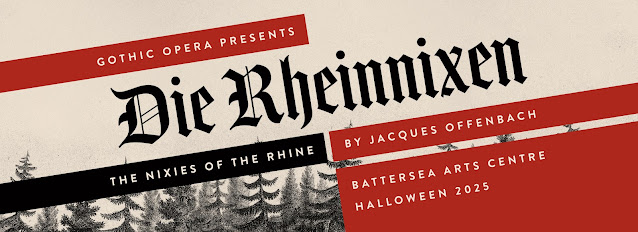Offenbach wrote his four-act romantic opera, Les fées du Rhin in 1864, for the Hofoper in Vienna where it was performed in a German translation as Die Rheinnixen. The tenor Alois Ander was ill and unable to learn his part (though it should be pointed out that Ander was the tenor selected for the intended Vienna premiere of Tristan und Isolde who proved incapable of mastering the role of Tristan during rehearsals between 1862 and 1864). The end result was that Die Rheinnixen premiered in an incoherently truncated version and the result was misunderstood, also the critic Eduard Hanslick was not inclined to see Offenbach as a composer of romantic grand opera, but rather as a satirist. There were further performances in Cologne in 1865 but then Offenbach seemed to put thought of romantic opera aside.
By the 1860s, Offenbach was writing less for the Bouffes-Parisiens, and many of his new works premiered at larger theatres. He was writing works such as La Périchole (1868) which had less exuberant satire and more human romantic interest, and Les brigands (1869) that leaned towards more romantic comic opera. After the Franco-Prussian war, Offenbach relied quite heavily on revivals of his earlier hits, and none of his works from the 1870s had such success. His opera comique Fantasio, which premiered at the Opéra Comique veered far closer to romantic opera and Offenbach was heartbroken when it was taken off. All this would lead towards Les contes d’Hoffmann, whose Barcarolle is in fact a re-use of a chorus from Die Rheinnixen.
It was only in the 21st century that Offenbach editor Jean-Christophe
Keck was able to create a coherent edition of the work and it premiered
in Montpelier in 2002. The first fully staged performance was given in
Ljubljana by the Slovenian National Opera in 2005 and there have been
further performances of the work. New Sussex Opera under Neil Jenkins
gave the British premiere of the piece in concert in 2009, but it has
never been staged in the UK until now.
Gothic Opera continue to go where few companies fear to tread and this year the company returns to Battersea Arts Centre for a staging of Die Rheinnixen (The Nixies of the Rhine) in a production by Max Hoehn. Hoehn explains that “This production updates the opera’s setting from the Rheinland of the sixteenth-century to the postwar chaos of the short-lived Weimar Republic, with visuals inspired by the dream factory of German expressionist cinema and the political poster art of the period.”
Leon Haxby has created a new chamber orchestration of the opera for seven instruments, conducted by Hannah von Wiehler and the team also includes set and costume designer Isabella Van Braeckel, animator Amber Cooper-Davies, and lighting designer Luca Panetta, whose most recent project with Gothic Opera won Outstanding Achievement at the 2025 Profile Awards. The team will also be working with a group of costume design undergraduates from Guildhall School of Music and Drama.
Full details from Gothic Opera’s website









